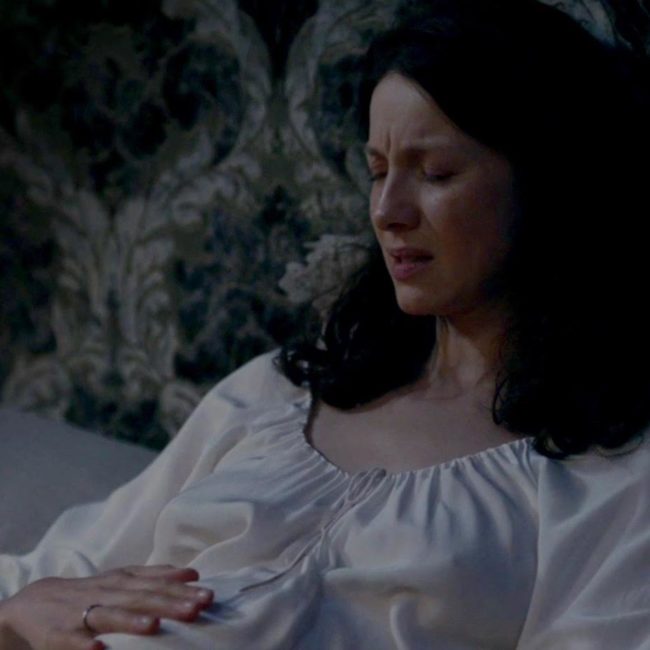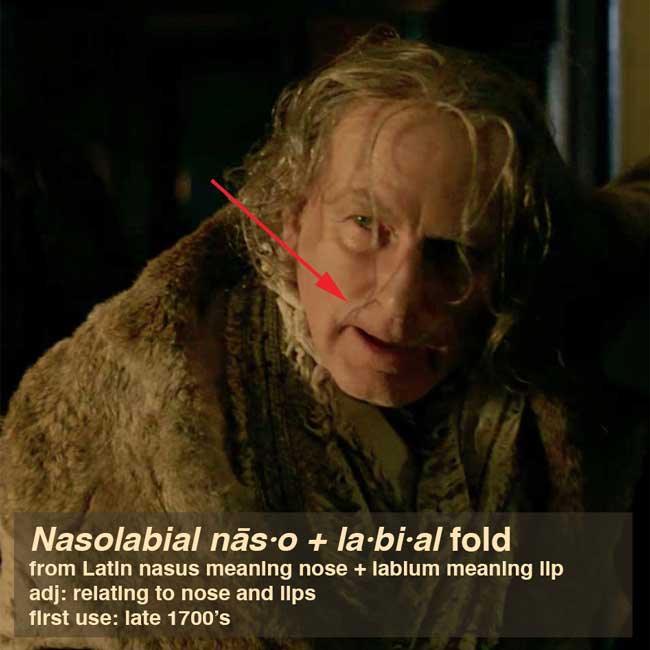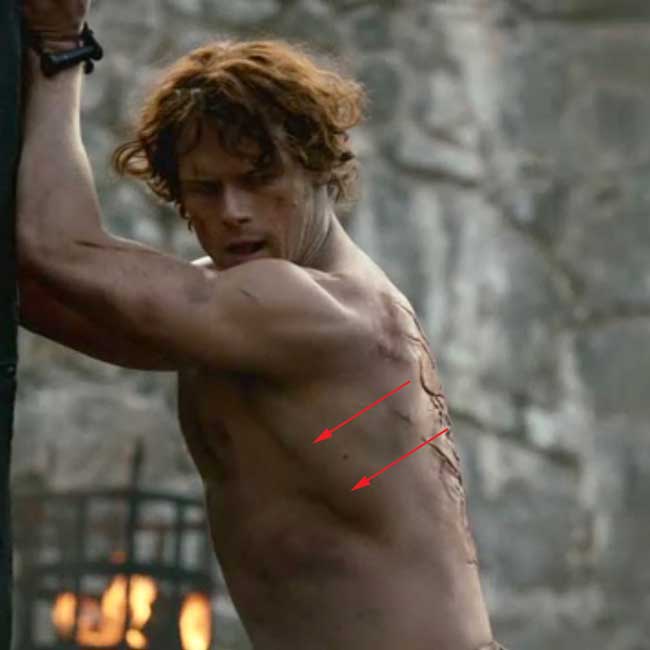
Claire has been poisoned! Learn more tomorrow in Anatomy Lesson #46, Splendid Stomach – Wobbly Wame!
A deeply grateful,
Outlander Anatomist

Human Anatomy taught through the lens of the Outlander books by Diana Gabaldon and the Starz television series

Claire has been poisoned! Learn more tomorrow in Anatomy Lesson #46, Splendid Stomach – Wobbly Wame!
A deeply grateful,
Outlander Anatomist

Anatomy def: Skin folds extending from each side of nose to each corner of mouth, separating cheeks from upper lip. Also known as smile or laugh lines.
Outlander def: Angular creases of Colum’s facial skin, marked by age and suffering.
Learn about nasolabial folds in Anatomy Lesson #11, “Jamie’s Face” or “Ye do it Face to Face?”
Read about Colum’s nasolabial folds, deep creases from nose to lips, in Dragonfly in Amber book. Pain from his debilitating condition has deepened these folds.
A smile twitched the fine-cut lips. He had the bold beauty of his brother Dougal, ruined as it was, and when he lifted the veil of detachment from his eyes, the power of the man overshone the wreck of his body.
…He stretched and shifted his position, easing his bones on the lichened stone bench. His lips were pressed tight, by habit, against any exclamation of discomfort, and I could see what had made those deep creases between nose and mouth.
See Colum’s nasolabial fold (red arrow) in Starz episode 212, The Hail Mary. Dinna mistake the lank strand of hair across his face as his right skin fold. This puir chieftain feels too far ill for careful grooming! Fare thee well, Colum, ye were a formidable laird!
A deeply grateful,
Outlander Anatomist
latissimus /läˈtisəməs/ dorsi /dor-si/
Sing. n: latissimus dorsi; pl. noun: latissimi dorsi
First use: early 17th century
From Latin latissimus meaning broadest + dorsum meaning back

Anatomy def: Broadest pair of back muscles, extending from lower spinal vertebrae to each humerus. Latissimi dorsi extend the humeri (pl.) as in pull-ups but also adduct (pull against torso) and internally rotate (roll towards sternum) these bones. Commonly known as “lats,” at the gym.
Outlander def: Substantial Jamie “lats” strain against ghastly iron manacles as they anticipate the lead pummels!
Learn about latissimi dorsi and the movements each exerts on its respective humerus in Anatomy Lesson #19, “To Arms, Too Arms, Two Arms!”
Read about Jamie’s back muscles in Dragonfly in Amber book. Herself writes about back muscles fairly often (yay!). Somewhere, amid these back muscles are the latissimus dorsi!
Jamie had by now thrown himself on the floor and was doing the Royal Air Force exercises I had recommended to strengthen the muscles of his back.
He was gentle and slow, pausing now and then to kiss me deeply, moving again only at my silent urging. I ran my hands softly down the slope of his back, careful not to press on the healing ridges of the fresh scars.
I touched each soft hollow, the hidden places of his body. Felt the grace and the strength of each curving bone, the marvel of his firm-knit muscles, drawn lean and flexible across the span of his shoulders, smooth and solid down the length of his back…
See Jamie’s left latissimus dorsi (red arrows) bulge at Fort William’s whipping post (Starz, episode 106, The Garrison Commander). If only he could smack that madman in the mouth… Ahhhh, wait a wee bit Jamie, this will come to pass soon!
A deeply grateful,
Outlander Anatomist